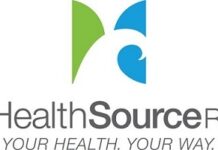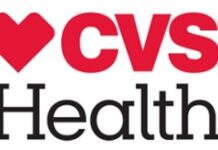
PROVIDENCE – The two drug samples, sold on the streets of Providence and Warwick as methamphetamine, may have seemed indistinguishable at a glance. But while one was pure methamphetamine, an analysis found, the other was made from numerous substances, including the highly potent opioid fentanyl.
“A sample that was sold to be used as a stimulant actually contained a range of stimulants and opioids, other substances that really drive overdose risks” said Alexandra Collins, a medical social scientist and assistant professor of epidemiology at Brown University.
The samples were among early data collected as part of TestRI, a two-year study that Collins and Dr. Rachel Wightman, a physician and assistant professor of emergency medicine at Brown, are leading in an effort to help people with substance use disorders and health care providers gain a better understanding of how to reduce overdoses and implement harm reduction practices.
The research, a joint initiative by the Brown University School of Public Health, Brown Emergency Medicine and the People and Place and Health Collective at Brown, is funded by a $564,391 grant from the national Foundation for Opioid Response Efforts.
Existing programs that track substances in the illicit drug supply generally don’t focus on making the information public or providing local context, the researchers said.
“Often, a lot of testing data and research kind of stops at the academy and doesn’t get back to the community,” Collins said, “so for us, that’s a big bridge we want to provide.”
With TestRI, “We are really trying to test locally and get information from the people on the ground who are affected, and get the information back out to them,” Wightman added.
Publicly available knowledge on what’s in the local drug supply may influence people to adjust their use patterns, Wightman said, or to potentially avoid drugs known to contain risky substances.
This information could also inform harm reduction tactics for people with substance use disorders, Collins said, such as keeping naloxone (Narcan) on hand, which can reverse an opioid overdose, as well as someone who can administer the life-saving substance in the event of an overdose.
“It’s giving folks the information and knowledge to be able to shape drug use patterns, or at least give them the information to make whatever decisions they need,” Collins said. Additionally, Collins said the data could encourage additional measures like more harm reduction centers and participation from other support services.
To gain a better understanding of how the data influences actions, the researchers will track 50 participants’ drug use patterns over the course of the study.
A better understanding of what substances are in the drug supply also helps health care providers treat patients who are experiencing an overdose, Wightman said.
“We’ve been seeing a lot of complicated overdoses in the emergency department,” Wightman said, including “people who receive naloxone but remain sedated, who still have repressed respiratory status.”
Doctors are “really struggling to manage those patients and understand what’s going on,” she added. Other patients come in not due to an overdose, but for skin and soft tissue infections, and other wounds related to drug usage, which Wightman said are also on the rise and can be a challenge to treat without knowing the exact causes.
Though the initiative launched less than two months ago, findings such as the two methamphetamine samples already show striking differences in the composition of illicit drugs in Rhode Island, Wightman and Collins said.
The samples are collected on a voluntary basis from people who use illicit drugs, then analyzed in the lab of Adina Badeya, director of toxicology at Lifespan Health Corp.
Researchers plan to provide regular updates on at least a monthly basis once the program is more established, and will work with the Rhode Island Department of Health and harm reduction agencies to make the data accessible to those most impacted.
Jacquelyn Voghel is a PBN staff writer. You may reach her at Voghel@PBN.com.












